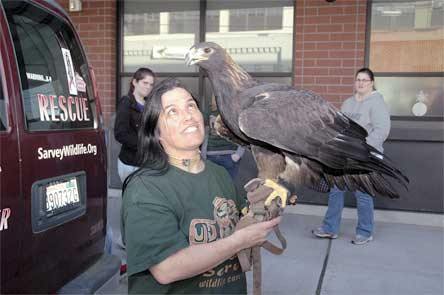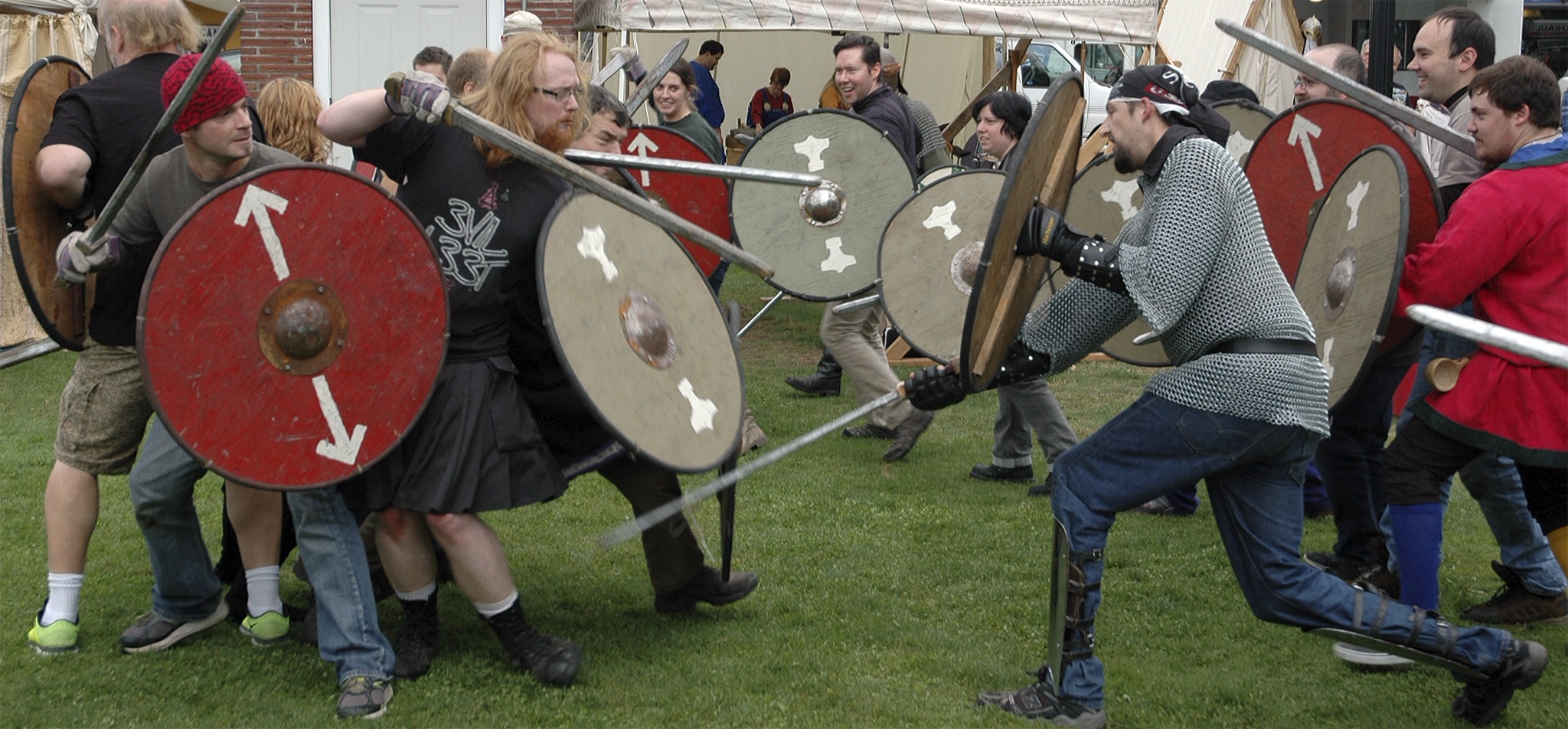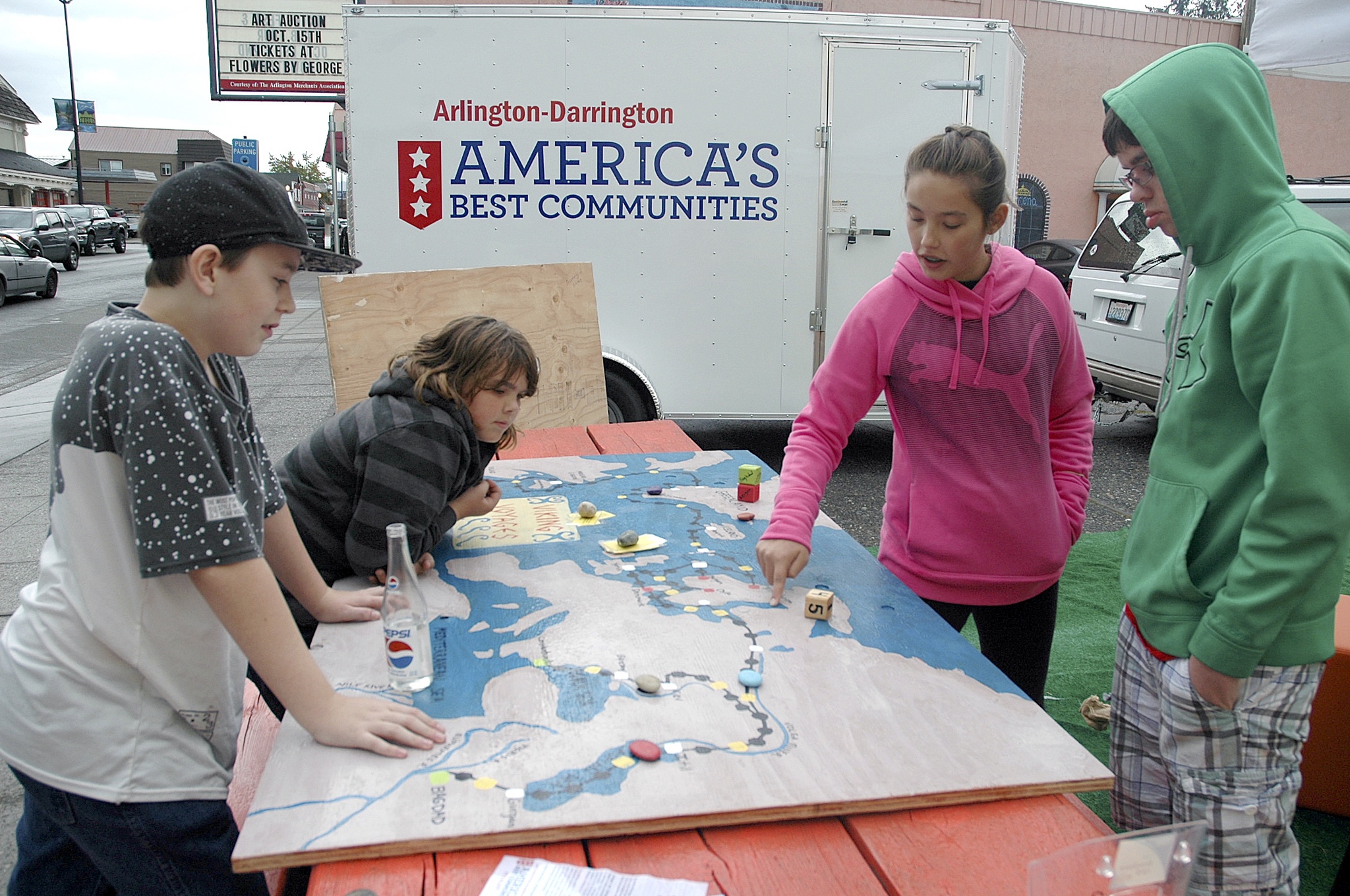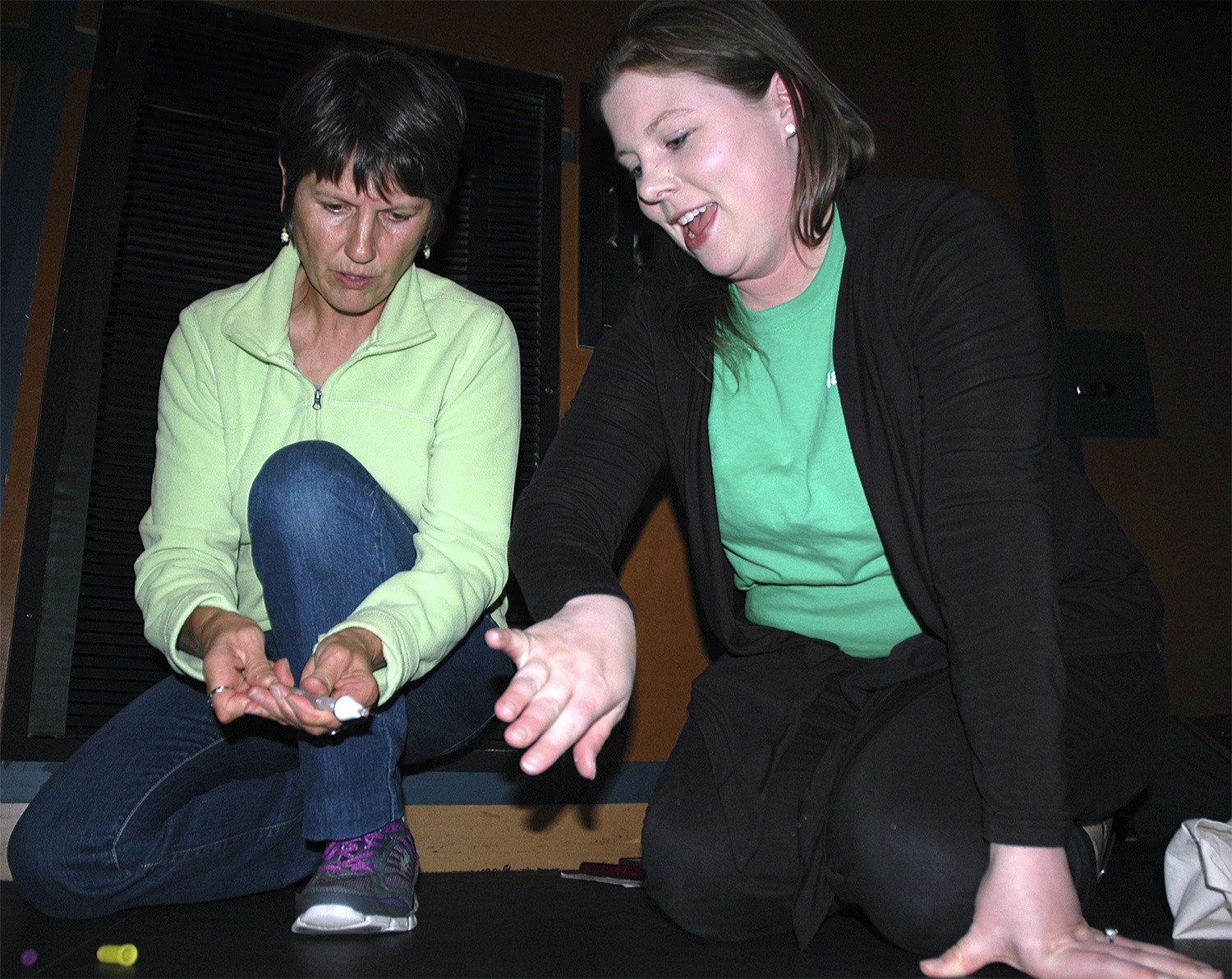ARLINGTON — The city of Arlington and the Stillaguamish Tribe’s third annual Eagle Festival Feb. 6 included art and informational exhibits alike in tribute to the eponymous bird of prey, known for feeding from the Stillaguamish River’s abundance of spawning salmon.
Eagle experts, volunteers and members of the Pilchuck Audubon Society guided bird-watchers through the Port Susan Bay Nature Conservancy and the Portage Creek Wildlife Sanctuary, while city and Tribal representatives spoke about the state of salmon habitats in the Stillaguamish River watershed to attendees in the City Council Chambers.
Downtown Arlington’s activities for the day included both familiar favorites and new features. Jean Olson and Terry Marsh received the first Sarah M. Arney Art Advocate of Arlington Award, “for those who go above and beyond in behalf of the arts in Arlington,” while roughly 50 other awards were presented to entries in the “Some Things Fishy in Arlington” community fish art project, which were also the subject of a scavenger hunt.
City of Arlington Natural Resources Director Bill Blake came up with the idea for the first “Ugly Chicken” contest at the Arlington Co-Op Supply when it occurred to him that eagles eat chickens. Contrary to its name, the contest also recognized chickens who were prettiest, meanest, most flamboyant and most unique.
“It’s fun for the kids to have all those categories,” said city employee Sonya Blacker, who reported that the contest drew 15 entries. “We’ve been asked to do this again in the summer.”
Al Elliott’s white rooster, Cisco, was billed as “the meanest rooster in the world,” while Allison Blacker’s 1-year-old rooster, Bubbaa, was so calm and passive that she kept him out of a cage on a leash. Maurice Kinney didn’t dare let his rooster, Beast, out of his cage, even though he’d grown so big that he nearly filled the cage, since Beast had already escaped once, when placed on the chopping block.
Kestrel SkyHawk led two presentations by the Sarvey Wildlife Center in the Council Chambers, in which onlookers got to see less domesticated birds on display. SkyHawk explained that Sarvey has rehabilitated injured, orphaned and ill raptors and other wild animals for close to 30 years, taking in more than 4,000 such animals every year. While Sarvey’s goal is to release the animals under its care back into the wild, the raptors that appeared in the Council Chambers were among the animals for which Sarvey provides permanent care, since they can no longer survive in the wild without such care.
Sarvey volunteer Robin Taylor held a Northern Saw-whet Owl that suffers from a bad eye and a bad wing, incurred when its nesting tree was cut down by loggers, while fellow volunteer Christina Stretch offered a perch to a Barn Owl that SkyHawk described as “corrupted” by having been raised by people.
“She doesn’t want to hunt, or even socialize with other owls,” SkyHawk said. “She’s too used to being fed and cared for by humans.”
The Barred Owl that rested on Sarvey volunteer Robert Lee’s arm feeds on an expensive diet of rodent meat and raw beef hearts, and is unable to fly well enough to be released due to a car collision.
“The number one reason we get animals is because they’ve been hit by cars,” SkyHawk said. “Raptors develop this prey fixation, so that they focus so much on getting the food they see that they don’t pay attention to anything else.”
SkyHawk advised those who encounter possibly injured wild animals to first make sure they’re actually hurt, before donning gloves and using a sheet, towel or jacket to bundle them in a container that’s warm, dark and quiet, and then take them to experienced caregivers such as those at Sarvey.
As downtown merchants offered wagon rides and Saturday sales in honor of the Eagle Festival, the Arlington Arts Council showcased photos of eagles and nature, while the Friends of the Arlington Library sponsored nature and wildlife poetry contests. During the art show, Karen Lewis mounted a buffalo skull on timber from a local mill, with high-tensile electric fencing wire wrapped around it, to pay tribute to wildlife’s continued existence in the modern world, while Jill Bhear submitted canvases of abstract glue patterns, covered in colorful acrylic paint.
“It’s neat to see the results of the Arts Council’s efforts,” George Boulton said. “It’s very worthwhile.”







